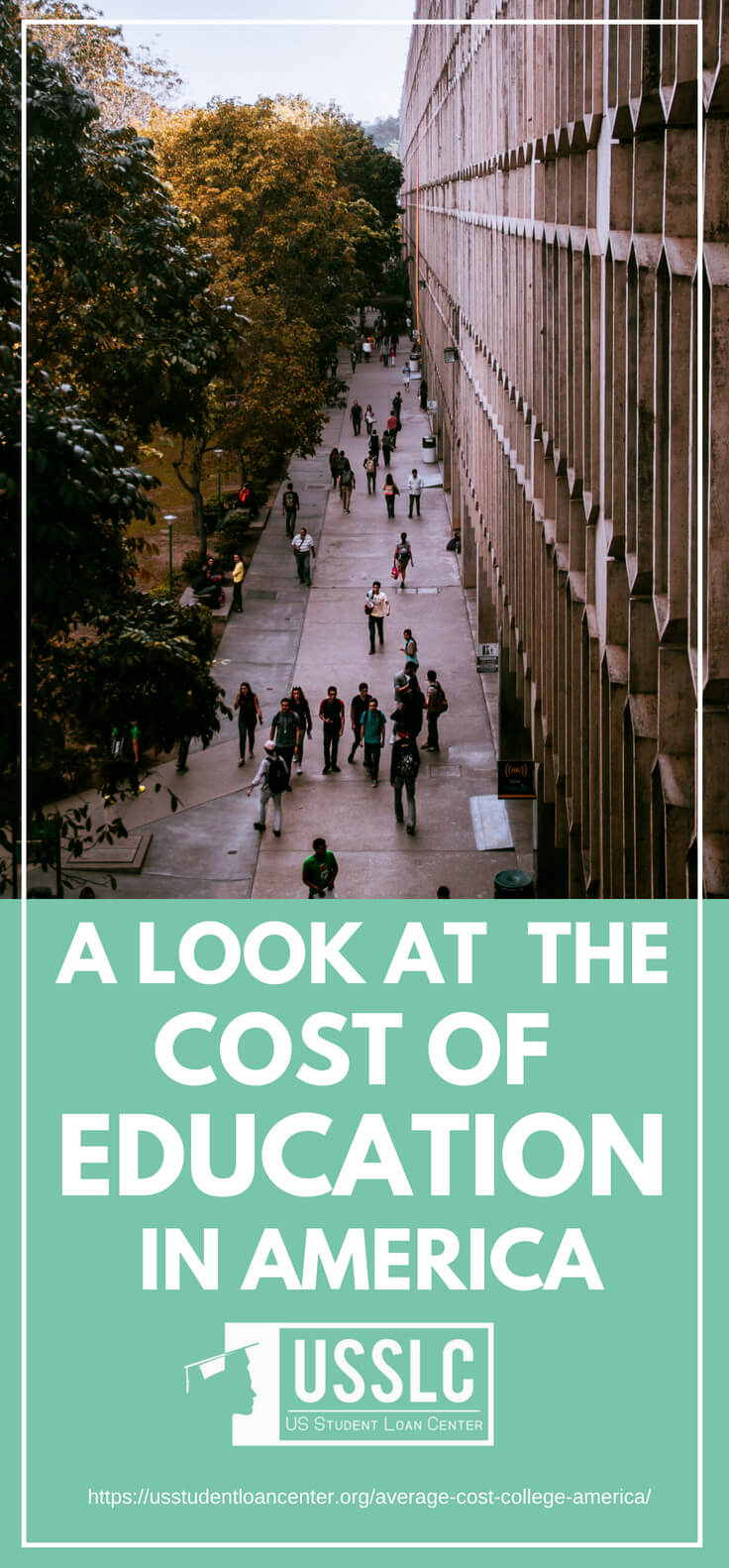The average cost of college education in America remains comparatively expensive.
However, the US is still one of the top international choices when it comes to higher education.
So to explain why, here is a list of college tuition costs. Take a closer look at the average total cost of college in the US for both a public and private education.
(Pro Tip: Are you a recent or soon-to-be graduate with a hefty handful of loans? If so, you are probably wondering what the next best step is for managing them after graduation. Not a worry! Skip the confusion and check out this super-equipped Graduate’s Guide To Student Loans and find out how you can easily understand your finances, repayment, and ways to manage life after college, here.)
How Much Is the Average Cost of College in the US?
Overview of US College Cost of Education
The cumulative cost of college education in the US generally consists of tuition, college fees, books and supplies, room and board, and daily personal allowances.
Based on research conducted by the US College Board, public college education for an in-state student costs an average of $20,090, with out-of-state student prices at around $35,370.
Additionally, studying at a private college cost on average $45,370.
These high numbers hinder many students from attending college, but the existence of a wide range of student loan programs seek to address this difficulty.
Additionally, if all of this sounds too expensive, there are community or city colleges that offer two-year degrees where tuition costs are relatively cheap.
An average cost of community college tuition fee is about $4,868 annually for in-state students. While for private colleges, the annual tuition is about $15,467.
1. Tuition
First on our college expenses list are tuition fees. Tuition fees depend on the number of units a student elects to take for an entire academic year.
In-state students usually pay lower tuition as compared to non-resident students.
Additionally, tuition varies per major.
For example, students enrolled in fine arts, sciences, law, and medicine programs usually pay higher tuition compared to communications, business, and accounting majors. Moreso if a student chooses to enroll in one of the most expensive colleges.
The college tuition inflation in the US is real. Just think about how much will college cost in 10 years.
2. Miscellaneous School Fees
Every school charges certain fees for school-related activities such as field trips. These miscellaneous fees can also include registration fees, administrative fees, parking decal fees, mandatory fees, course fees, and even late fees.
While charges vary per college, some of the most common components of every college’s fees are for the campus library, athletic facilities, and student government fees.
3. Books and Supplies

Another important thing to consider with the average cost of college is school supplies. After all, books, computers, and binders all cost money.
Like any other factor, this cost depends on the program in which a student enrolls.
An average of $1,000 to $2,000 is standard for the annual cost of books. However, you should also keep in mind that the price of books increases at a rate of 8-10% each year.
(Pro Tip: Are you a recent or soon-to-be graduate with a hefty handful of loans? If so, you are probably wondering what the next best step is for managing them after graduation. Not a worry! Skip the confusion and check out this super-equipped Graduate’s Guide To Student Loans and find out how you can easily understand your finances, repayment, and ways to manage life after college, here.)
4. Housing
Since many students prefer out-of-state colleges, housing is an important consideration when calculating pricing.
Overall, the housing plan depends on a student’s lifestyle. Most colleges offer dorm-type rooms, while apartment-type boarding is also offered at a more expensive cost.
Of course, housing in private colleges normally costs more than public. At private colleges, housing costs average around $11,000, while public colleges offer housing at $9,500.
5. Daily Allowances
Personal expenses also form part of the calculation to make the total cost more comprehensive.
These daily allowances are important to factor in, as they contain many of the essentials: food, clothing, entertainment, personal hygiene, and transportation costs. And don’t forget to factor in your emergency fund.
Bear in mind that these can potentially increase if you don’t stick to your budget.
Watch this guide by Bank of America to help you estimate the cost of a college education:
Most colleges publish higher costs than what they actually expect students to pay when it comes to tuition fees. This is because they also offer special discounts in the form of scholarships and grants. Sometimes, these published costs are the main reason why a student and their families stop pursuing their dream.
Hopefully, with the information offered above, you won’t be discouraged from seeking assistance. Additionally, talk to an education finance expert.
Then, you may be able to find the right deal to help you achieve your American dream.
(Bonus Tip: Are you a recent or soon-to-be graduate with a hefty handful of loans? If so, you are probably wondering what the next best step is for managing them after graduation. Not a worry! Skip the confusion and check out this super-equipped Graduate’s Guide To Student Loans and find out how you can easily understand your finances, repayment, and ways to manage life after college, here.)
Are there other factors you want to add regarding the average cost of college in the US? Share your thoughts with us in the comments section below.
Up Next: What Is Student Loan Forgiveness?

Editor’s Note – This post was originally published in December 4, 2017 and has been updated for quality and relevancy.


Leave a Reply